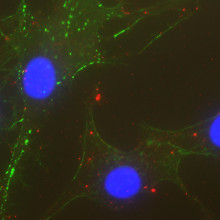This year marked Canada’s 150th anniversary of Confederation, giving us an opportunity to celebrate the contribution of our research achievements to our nation’s rich history of scientific innovation. We built a Canada 150 website, incorporated Canada 150 elements in this year’s London Health Research Day and Lawson Impact Awards, and hosted two Canada 150 themed Café Scientifique events: An image of the future: Innovations in imaging research and Cutting Edge: Surgical advancement through research. In an insideLHSC article, we showcased the evolution of kidney research at Lawson – from the first artificial kidney machine in Canada to Drs. Chris McIntyre and Amit Garg’s research on personalizing the temperature of dialysis fluid to protect the heart and brain.
Canada 150 also allowed us to reflect on the impact our research will have on health care in the future and the legacy we are leaving for the next generations of Canadians. The research conducted by Lawson scientists in 2017 is no exception. The following are just a few examples of the many groundbreaking discoveries and innovations that will help improve patients’ quality of life for years to come.
Brain training may help reduce symptoms of psychiatric illness
Individuals with post-traumatic stress disorder (PTSD) often experience more random patterns of brain activity. A leading symptom of PTSD is hyperarousal, which is associated with defensive responses to stress or triggers. Led by Dr. Ruth Lanius, researchers at Lawson and the University of Geneva showed that a technique called brain training, or neurofeedback, can be used to restore patterns of brain activity to a more balanced order and reduce symptoms of hyperarousal in patients with PTSD. Patients exercise their own brain activity through a circular neurofeedback loop, which acts as a mirror to display brain activity. Since brain activity is displayed on screen, users can complete brain training exercises in ways similar to a gym workout.

Discovery shows promise for treatment of glaucoma
Primary open-angle glaucoma is the most common type of glaucoma, which is a group of diseases that affect nearly 70 million people worldwide. Glaucoma is characterized by progressive damage to the optic nerve which ultimately leads to blindness. Dr. Sunil Parapuram and his team found that a protein called “phosphatase and tensin homolog” (PTEN) in the trabecular meshwork has the potential to be used to treat some patients with primary open-angle glaucoma.
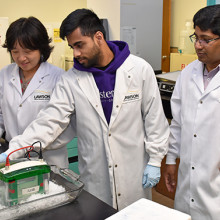
Bringing next-generation genome sequencing to London cancer patients
Understanding a cancer’s genetics is key to selecting targeted therapies that are likely to be of the most benefit to a patient. An Ontario Institute for Cancer Research study, called Ontario-wide Cancer TArgeted Nucleic Acid Evaluation (OCTANE), will use next-generation genome sequencing technology to bring a unified molecular profiling approach to five Ontario cancer centres, including the London Regional Cancer Program at London Health Sciences Centre’s Victoria Hospital. The London-based study, conducted by Lawson, will contribute to the creation of OCTANE’s province-wide database of genomic and clinical data. This database can help patients find approved treatments, or to enrol in experimental targeted therapies that are being evaluated through clinical trials. By sharing data across the five sites, OCTANE will also help to inform the development of future treatments and research studies.
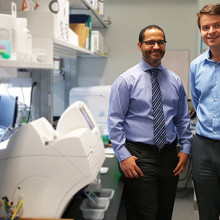
Simple CT scanning procedure can predict effectiveness of ovarian cancer treatment
Technology developed at Western University and Lawson can provide a new window into whether or not patients are responding to treatment for advanced ovarian cancer. A multi-centre clinical trial led by Dr. Ting-Yim Lee has demonstrated that CT Perfusion, which measures blood flow and blood volume to tumours associated with ovarian cancer, can provide an accurate prediction of how well a treatment is working, allowing physicians the opportunity to better plan treatment.
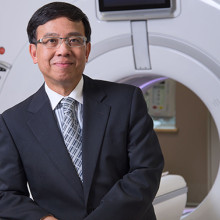
Spinal cord stimulation treatment improves mobility in patients with Parkinson’s disease
Gait freezing, a common symptom of Parkinson’s disease, hinders the ability to produce continuous stepping movements. As part of a study led by Dr. Mandar Jog, five patients have undergone spinal cord stimulation (SCS) surgery at London Health Sciences Centre’s University Hospital to treat this symptom. Two leads that send out electrical pulses are placed along the spinal cord in the patients’ lower back. A handheld device can control the frequency and strength of the electrical pulses. After the surgeries, the research team personalized the SCS settings. The participants experienced an average decrease in the number of freezing episodes from 16 to zero over six months, and showed significant improvements in walking speed and length of steps.
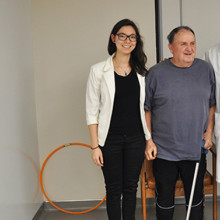
Probiotics could improve survival rates in honey bees exposed to pesticide
Honey bees are critical to agriculture as they pollinate approximately 35 per cent of the global food crop, contributing an estimated $4.39 billion per year to the Canadian economy. Pesticides are currently used to maximize crop yields, but the most common pesticides, neonicotinoid insecticides, are a major factor in colony collapse disorder which is killing honey bee populations. Researchers at Lawson and Western University led by Dr. Gregor Reid showed that probiotics can potentially protect honey bees from the toxic effects of pesticides.

Link between maternal marijuana use and low birth weight
A research team from Lawson, Western University and Brescia University College led by Dr. Jamie Seabrook found that women who used marijuana while pregnant were almost three times more likely to have an infant with low birth weight. Low birth weight can lead to respiratory problems and asthma, and poor cognitive development during childhood. It also increases an infant’s risk of developing type 2 diabetes, hypertension and cardiovascular disease later in life. This is the first large-scale study in Canada to show the association between marijuana use among pregnant women and low birth weight infants.

Walking and talking can be an early predictor of dementia
Dr. Manuel Montero-Odasso is leading a team of researchers at Lawson and Western University demonstrating that gait, or motion testing, while simultaneously performing a cognitively demanding task can be an effective predictor of progression to dementia and eventually help with earlier diagnosis. To date, there is no definitive way for health care professionals to forecast the onset of dementia in a patient with memory complaints. The “Gait and Brain Study” team is assessing up to 150 seniors with mild cognitive impairment, a slight decline of memory and other mental functions which is considered a pre-dementia syndrome, in order to detect an early predictor of cognitive and mobility decline and progression to dementia.
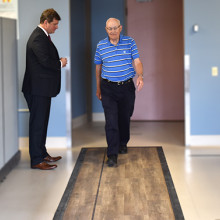
‘Ridiculously healthy’ elderly have the same gut microbiome as healthy 30 year-olds
In one of the largest microbiota studies conducted in humans, researchers at Western University, Lawson and Tianyi Health Science Institute in Zhenjiang, Jiangsu, China have shown a potential link between healthy aging and a healthy gut. With the establishment of the China-Canada Institute, the researchers studied the gut bacteria in a cohort of more than 1,000 Chinese individuals in a variety of age-ranges from 3 to over 100 years-old who were self-selected to be extremely healthy with no known health issues and no family history of disease. The results showed a direct correlation between health and the microbes in the intestine.
On October 30, 2017 Drs. Greg Gloor, Gregor Reid, Jeremy Burton and Jean Macklaim participated in a Reddit Science AMA (Ask Me Anything), answering over 30 questions related to the study and to probiotics and the human microbiome. Diet, environment, and fecal transplants were some of the topics discussed.
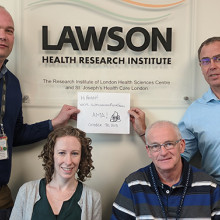
New test can identify P acnes shoulder infection, a complication of arthroplasty surgery, within 24 hours
Propionibacterium acnes (P acnes) is a type of bacteria typically found deep in the hair follicles and sebaceous pores of the skin. A P acnes infection of the shoulder is a common and serious complication that occurs after arthroplasty (surgery to replace a damaged joint, most commonly with artificial material). A team of researchers led by Dr. David O’Gorman developed a test called the PCR-RFLP (polymerase chain reaction restriction fragment length polymorphism) assay, which can accurately identify P acnes infection within 24 hours. Current methods take an average of six or more days, and are prone to sample contamination and false-positive results.
